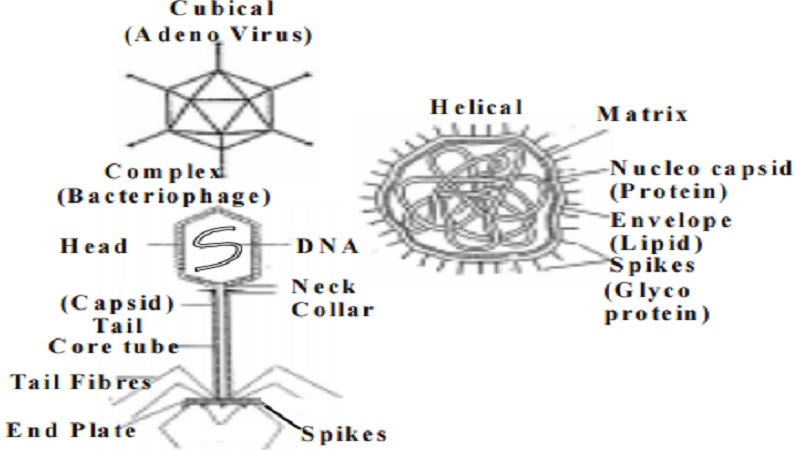Chapter: 11th 12th standard bio zoology Human Body higher secondary school
Viruses - Introduction And General characteristics

Viruses - Introduction
Viruses are still biologists' puzzle because they show both living and non-living characters. Hence viruses are regarded as a separate entity. It is not taken into account in Whittaker's five kingdom classification. Viruses are now defined as ultramicroscopic, disease causing intra cellular obligate parasites.
Brief history of discovery
Viruses were not known to biologists for a long time due to their ultramicroscopic structure though their presence was apparent by infectious diseases which were proved not due to bacteria. It attracted the attention of investigators only in the 19th century when a virus called tobacco mosaic virus (TMV) caused severe damage to commercially important tobacco crop.
Enigma of Viruses
Living characteristics of virus Vs Non-living characteristics of virus
1. Ability to multiply inside a host plant or animal cell 1. Inability to multiply extra cellularly
2. Ability to cause diseases 2.Absence of any metabolic activity
3. Possession of nucleic acid, protein, enzyme, etc. 3.Absence of protoplasm
4. Ability to undergo mutation 4.Can be crystallized.
Mayer demonstrated that the disease could be transmitted just by applying the sap of infected leaf to the leaf of healthy plant. He thought that the disease was due to a bacterium. It was then the Russian biologist Iwanowsky (1892) who demonstrated that the sap of infected leaves even after passing through bacterial filter remained infective, ruling out the bacterium as the causative agent. Dutch microbiologist Beijerinck (1898) confirmed the findings of Iwanowsky and called the fluid 'contagium vivum fluidum ' which means contagious living fluid. This was later on called virion (poison) and the disease causing agent as virus. W.M. Stanley (1935), the American biochemist, isolated virus in crystalline form and demonstrated that even in that state it maintained the infectivity. This marked the beginning of a new branch of science called virology.
General characteristics
Viruses are ultramicroscopic and can cause diseases in plants and animals. They are very simple in their structure. They are composed of nucleic acid surrounded by a protein coat. Nucleic acid can be either RNA or DNA, but never both. They have no cellular organization and have no machinery for any metabolic activity. They are obligate intracellular parasites and they multiply within their host cells. Once outside the host cell they are completely inactive.
Related Topics